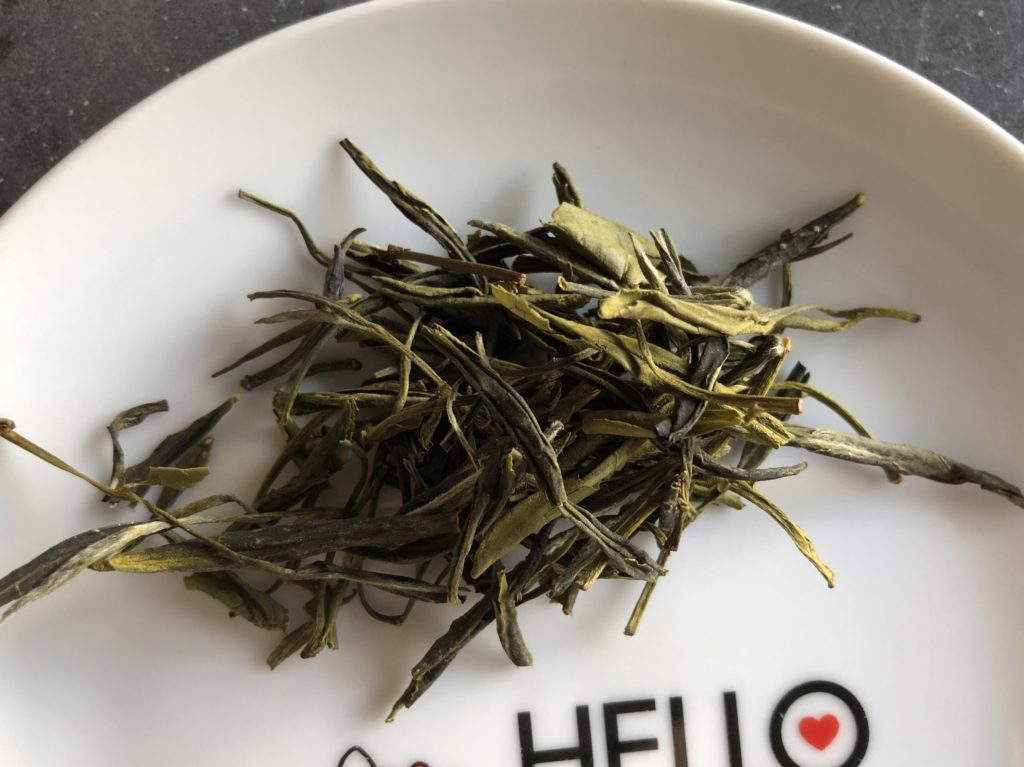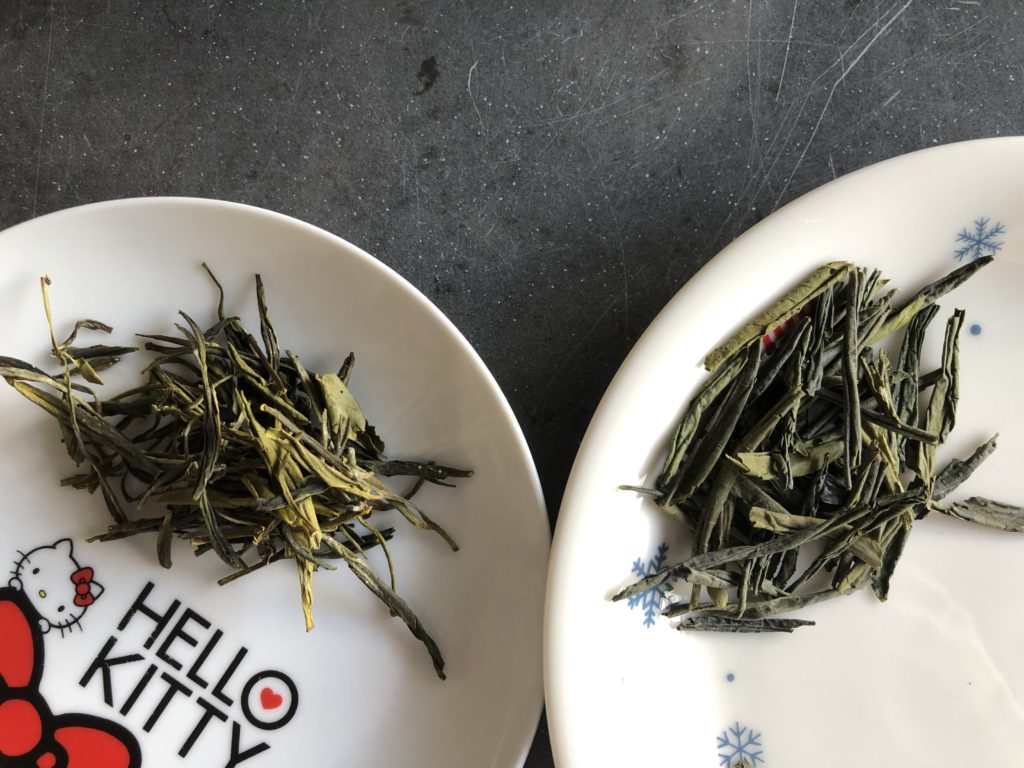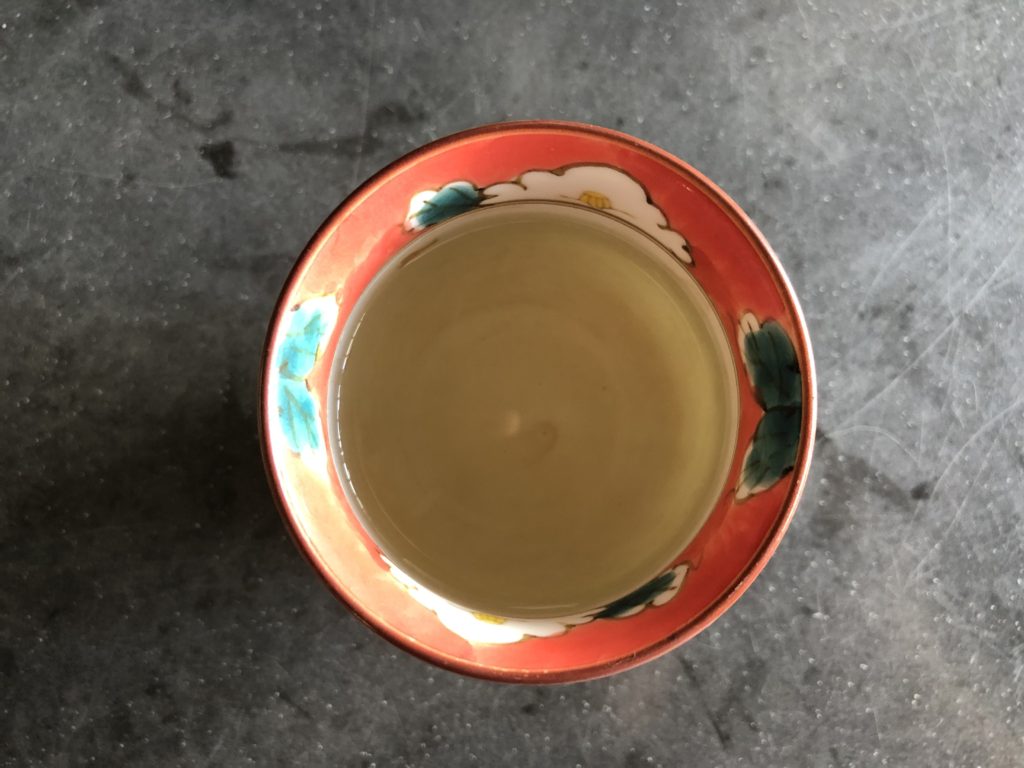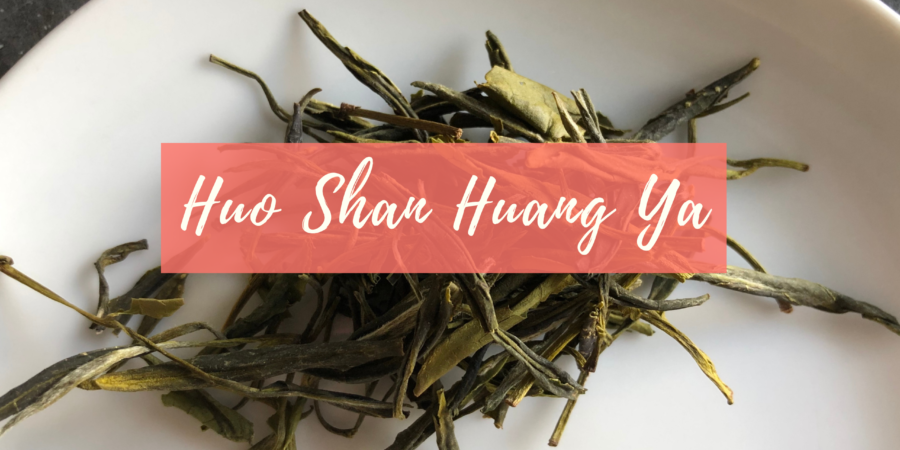This is one of the teas that I was most excited for in the tea haul! Well, I was excited for the dancongs as well, but I wasn’t as excited as I was for the yellow tea because:
- I didn’t realise how special dancongs were until after I started drinking and looking into them
- I knew that yellow teas are relatively rare
Hence, my excitement for this tea was probably the greatest.
What are yellow teas?
One of the six types of teas, yellow teas are very similar to green teas. The main difference is that yellow teas are lightly fermented. Unfortunately, the Chinese word for ‘fermented’ and ‘oxidised’ is 发酵, which gives rise to misunderstandings [1] but I believe in this case, the yellowing process refers to microbial fermentation, not oxidisation. Otherwise, yellow teas would essentially be very light oolongs (if I’m wrong, please correct me!)
Yellow tea has a pretty long history, but the yellow tea that was originally made differs from the yellow teas we have now. That was because in the past, the classification of tea wasn’t so clear and teas with yellow buds (but that we would now call green tea) was also called yellow tea [2].
What I learnt in this round of research was that there are actually three types of yellow tea:
- Yellow teeth (黄芽, huang ya)
- Yellow-small (黄小, huang xiao) – for small buds. E.g. Huo Shan Huang Ya, Mengding Huang Ya, and Junshan Yin Zhen [3]
- Yellow-big (黄大, huang da) – for larger tea leaves, starting from the Ming dynasty. E.g. Huoshan Huang Da Ye (霍山黄大茶) and Da Ye Qing (大叶青)
What is Huo Shan Huang Ya?
Huo Shan Huang Ya is a yellow tea from Anhui. In my opinion, it’s one of the more accessible teas – there aren’t many places selling yellow tea, but if they do, it’s normally this. It’s a tea with a long history, going all the way back to the Western Han dynasty. In the Tang Dynasty, it was listed as one of the fourteen tribute teas [4]. Despite this long history, we almost lost the tea once. Thankfully, thanks to research starting in 1971, we’ve been able to bring this tea back [5].
(Alleged) Health Benefits of Huo Shan Huang Ya
As always, please take all health claims with a grain of salt – a lot of health claims regarding teas haven’t been conclusively proven through medical trials [6]. But I did find this article on the health benefits of Huo Shan Huang Ya from Zhifure and I thought it was interesting enough to translate [7]. The benefits (with my comments) are:
- Radiation protection: the article mentions computer radiation but does not mention how much tea we’d have to drink. But I suspect the polyphenols, vitamins, and amino acids mentioned here are in green tea too and I’ve yet to see this claim elsewhere.
- Reduces Fat because it is a ‘natural tea’
- Protects the teeth because it’s rich in fluoride: I did a quick Google Scholar search (because I wanted to see if there were articles with many citations) but didn’t find anything. I did find some things in regular Google but it was hard to evaluate those studies.
- Aids digestion because it’s alkaline
- Anti-aging: I’ve seen similar claims for green tea as well
- Thirst-quenching: Probably because it’s a drink (okay, the article says it’s because of the compounds in the tea)
- Refreshes the mind due to the caffeine and catechins present: this is for all teas.
Tasting Notes

The dry leaves smelled vegetal and sweet; my overall impression was that this was going to be a mellow tea. The leaves clearly had a yellow tint and were more wiry compared to my Liu An Gua Pian. I even took a picture to compare; the differences are very clear when they’re side by side.

The first steep smelled a lot like green tea and the liquor was yellow with a green tint. My first impression was that this was a pretty sweet tea with a watery texture. There were grassy notes as well, as well as a very faint bitter note that gave the tea some complexity. To be honest, I didn’t really taste the nutty notes that I remember yellow teas were supposed to have, so I brewed some of the Liu An Gua Pian for comparison. When I had the teas side by side, it was pretty clear that the Liu An Gua Pian had clear umami and marine notes that weren’t present in the Huo Shuan Huang Ya. It was then that I realised the Huo Shan Huang Ya is mellower and had nutty notes.

I didn’t get to drink the second steep because, in tradition, I gave it away. The third steep was much like the first, but there was a stronger grassy note. It was still pretty sweet, though. The fourth steep was similar, so I didn’t bother steeping the teas again.

The wet tea leaves were pretty smooth and I thought it was cool that the top two leaves unfurled so prettily. The yellow sheen was even more prominent here.
Overall, this tea was pretty consistent in how it tasted, which is good if you’re planning to make this for a many people – you can brew it gongfu style and everyone will still have a consistent tasting experience.
Notes
[1] If you’re confused about the difference between oxidisation and fermentation, I’d highly recommend reading this two-part series by Tea Geek
[2] Baidu Baike article on Yellow Tea. It’s quite detailed, especially the science, and I’d recommend that you read it if interested!
[3] Article on Small-Yellow from Baidu Baike
[4] From the Chinese Wikipedia entry
[5] From a JD article on the history of Huo Shan Huang Ya
[6] A lot of the times, we have trials with rats or with people drinking insane amounts/concentrations of tea, which is not really replicable in real life. It doesn’t stop people from proclaiming that tea has XYZ benefits, but it should be taken with a grain of salt.
[7] Zhifure Article

Nice post! My understanding is that the production methods for yellow tea are often kept secret, but that after a preliminary frying, the leaves undergo a “smothering” step, which allows the moist, softened leaves to reabsorb their own aromatics. A roasting step then converts the simple polyphenols into complex theaflavins, which results in a yellow leaf and golden cup.
Oh, I see! I didn’t know that was the purpose of the smothering step – thank you for teaching me 😊